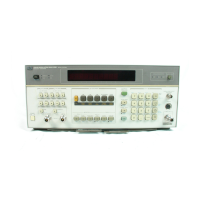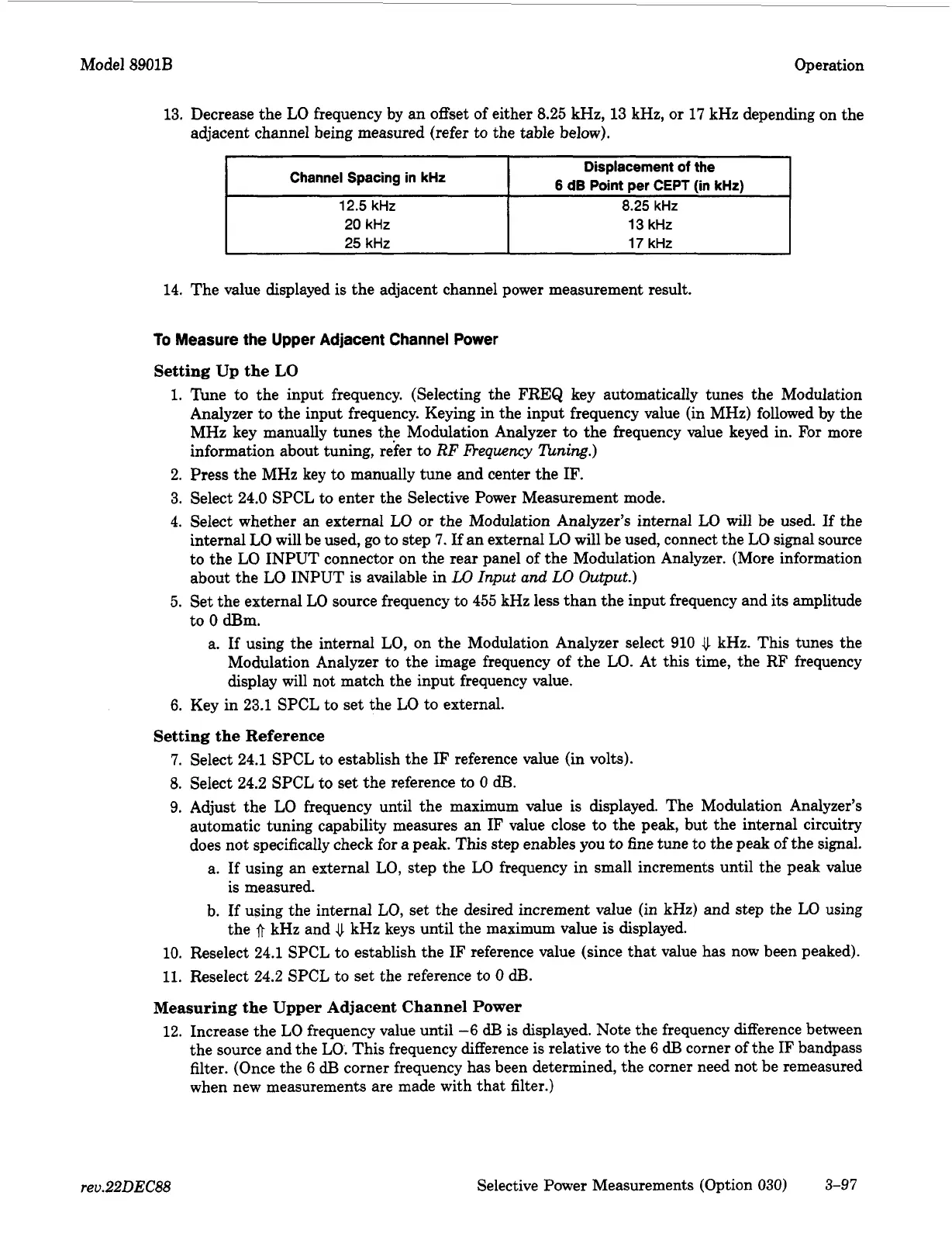Model
8901B
Operation
12.5
kHz
20
kHz
25
kHz
13.
Decrease the LO frequency by an offset of either
8.25
kHz,
13
kHz, or
17
kHz depending on the
adjacent channel being measured (refer to the table below).
8.25
kHz
13
kHz
17
kHz
Channel Spacing in
kHz
I
Displacement
of
the
6
dB
Point per CEPT (in
kHz)
1
14.
The value displayed is the adjacent channel power measurement result.
To
Measure the Upper Adjacent Channel Power
Setting Up the
LO
1.
Tune to the input frequency. (Selecting the FREQ key automatically tunes the Modulation
Analyzer to the input frequency. Keying in the input frequency value (in MHz) followed by the
MHz key manually tunes the Modulation Analyzer to the frequency value keyed in. For more
information about tuning, refer to
RF
frequency
Thing.)
2.
Press the
MHz
key to manually tune and center the IF.
3.
Select
24.0
SPCL to enter the Selective
Power
Measurement mode.
4.
Select whether
an
external LO
or
the Modulation Analyzer’s internal
LO
will be used.
If
the
internal
LO
will be used,
go
to step
7.
If an external LO will be used, connect the LO signal source
to the
LO
INPUT connector on the rear panel of the Modulation Analyzer. (More information
about the LO INPUT
is
available in
LO
Input
and
LO
Output.)
5.
Set the external LO source frequency to
455
kHz less than the input frequency and its amplitude
to
0
dBm.
a. If using the internal LO, on the Modulation Analyzer select
910
l)
kHz. This tunes the
Modulation Analyzer to the image frequency of the
LO.
At
this time, the RF frequency
display will not match the input frequency value.
6.
Key in
23.1
SPCL to set the LO to external.
Setting the Reference
7.
Select
24.1
SPCL to establish the IF reference value (in volts).
8.
Select
24.2
SPCL
to set the reference to
0
dB.
9.
Adjust the LO frequency until the maximum value
is
displayed. The Modulation Analyzer’s
automatic tuning capability measures an IF value close to the peak, but the internal circuitry
does not specifically check for a peak. This step enables you to fine tune to the peak
of
the signal.
a. If using
an
external LO, step the LO frequency in small increments until the peak value
b. If using the internal LO, set the desired increment value (in kHz) and step the
LO
using
10.
Reselect
24.1
SPCL to establish the IF reference value (since that value has now been peaked).
11.
Reselect
24.2
SPCL to set the reference to
0
dB.
is measured.
the
9
kHz and
4
kHz keys until the maximum value
is
displayed.
Measuring the Upper Adjacent
Channel
Power
12.
Increase the LO frequency value until
-6
dB
is displayed. Note the frequency difference between
the source and the
LO.
This frequency difference is relative to the
6
dB
corner of the
IF
bandpass
filter. (Once the
6
dB
corner frequency has been determined, the corner need not be remeasured
when new measurements are made with that filter.)
rev.22DEC88
Selective Power Measurements (Option
030)
3-97

